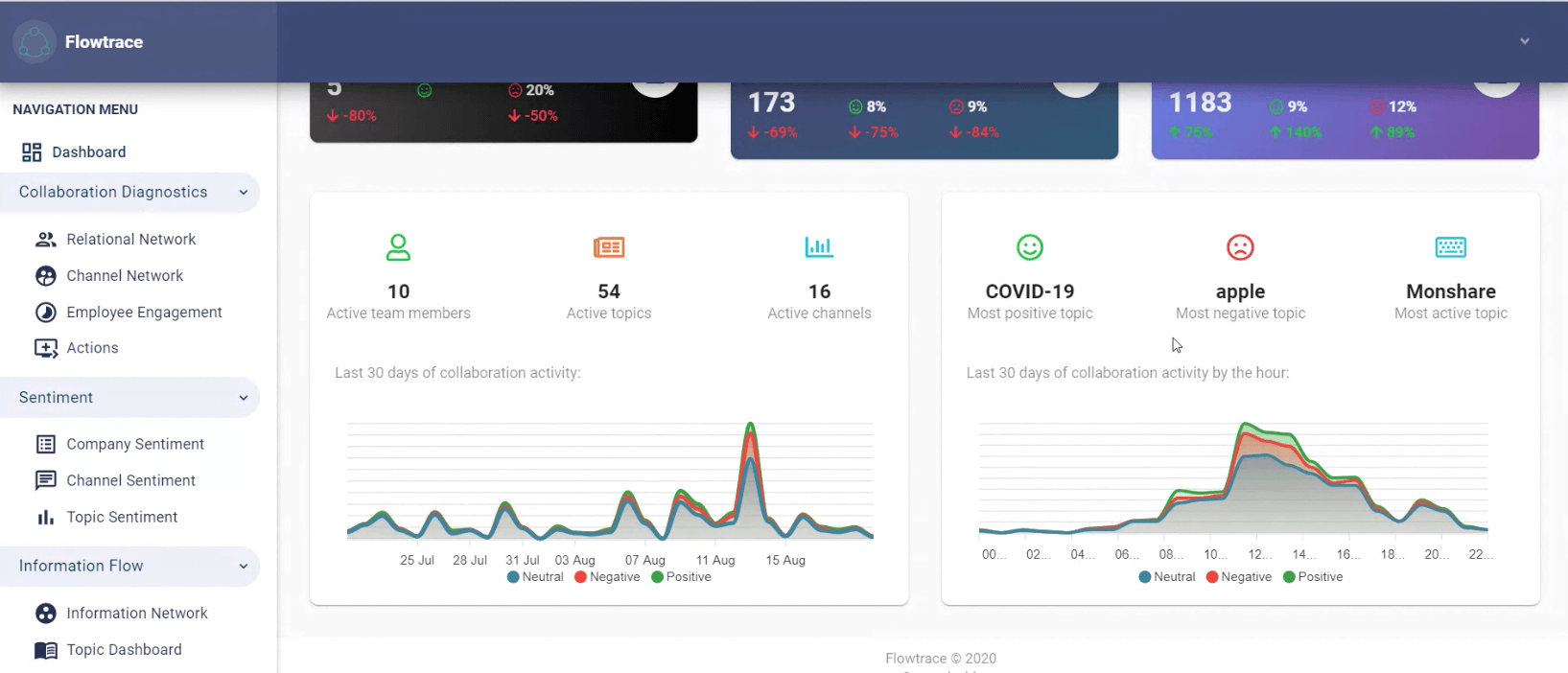We interviewed Olga Starosotska, entrepreneur and CEO of Monshare, an expense tracker app. In this part, we look at how Monshare used Flowtrace to facilitate the right kind of remote communication at different stages of growth.
In this last part Olga shares her experiences about the importance of communication, collaboration, and how just talking is not the answer to increase effective communication culture.
COMMUNICATION BETWEEN PEOPLE
Being a former consultant, I actually created a framework for this! I think the list of priorities in communication depends on how mature the company is:
The Starosotska communication maturity framework
1. TALK - The first stage is getting people to talk in general. Make sure that no one is left out and information flows freely within the team. At this stage, I use ‘connectedness’ and ‘engagement’ metrics within Flowtrace and analyze their trends.
2. LISTEN - The next stage is to look at how people communicate with each other: what is the general sentiment, do they ‘listen’ to each other's perspectives and have positive conversations. Flowtrace gives me an indication of the sentiment and how it changes over time. A healthy degree of conflict is acceptable, but a constant glum outlook in day-to-day conversation can affect the whole company.
3. THINK - The third stage, when people have a healthy frequency of communication and have more open and positive collaboration, is to make sure that people are discussing the right things. I find the trending topics in Flowtrace very useful indicators on what is ‘hurting’ and what the team is ‘thinking’ at a given point in time.
So thank you, Flowtrace, for supporting our journey to mature communication.
Is getting people to talk in general important or do you want certain people to talk with certain people?
In a small organization, it’s not that important, people will talk with each other. In a larger one though, you would want teams to talk with each other internally first and then externally with other teams, so there are no internal team conflicts.
What’s been your own experience with Flowtrace?
There is something to be said about being the topic that is most positively and negatively spoken about! Covid-19 is the most positive topic at the moment. There might be hope yet.

Do you have a case where Flowtrace really made a difference?
In a recent case we hired a new marketing leader and we wanted to make sure she is well integrated within the team. I wanted a tool to demonstrate how well she is getting along and onboarding with everything being remote. With Flowtrace, I could see that her ties to the team are strengthening and she is integrating well.
A big thanks for that!
This is Part 4 of a 4-part interview. Read all of Olga’s Startup Story and how Flowtrace helped Monshare with different organizational challenges.
Growth of a Remote Startup with Flowtrace I: How to Build a Team
Growth of a Remote Startup with Flowtrace II: How to Manage Time
Growth of a Remote Startup with Flowtrace III: How to Lead with Culture
Growth of a Remote Startup with Flowtrace IV: Communication Priorities (current article)